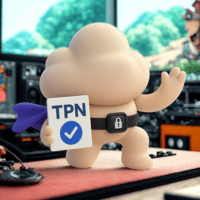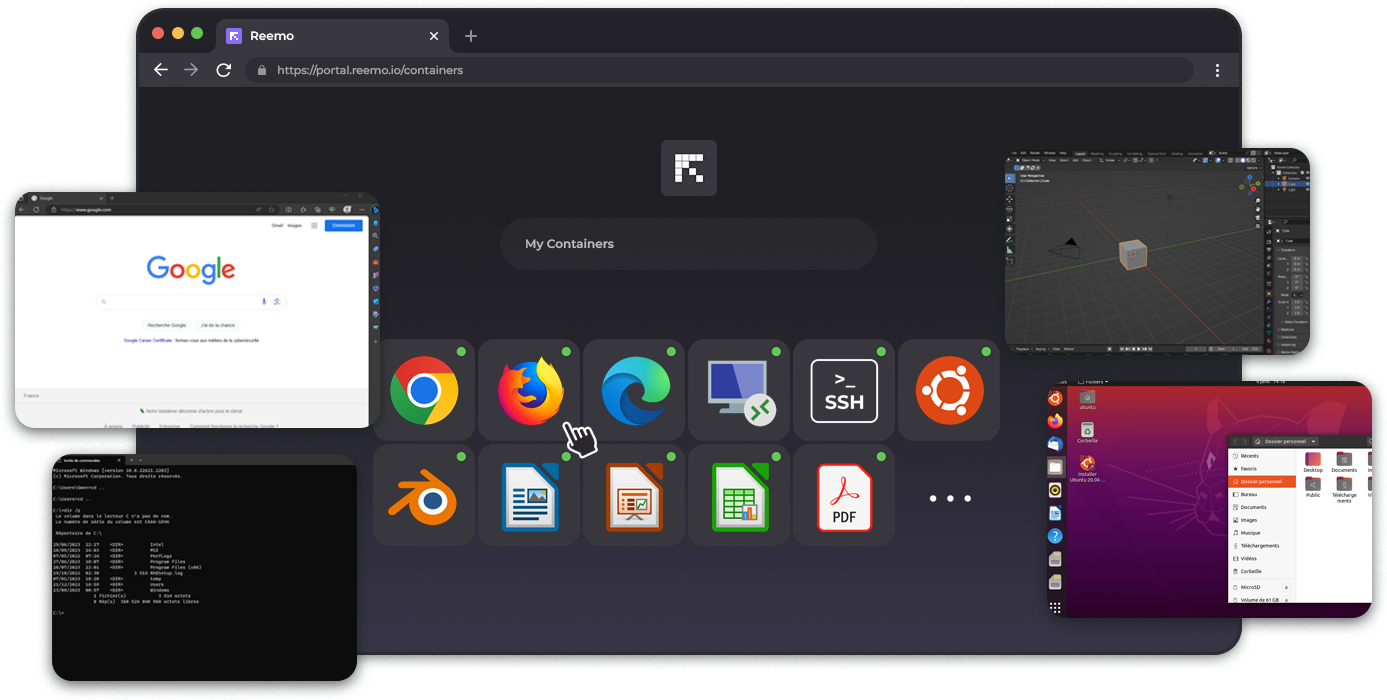Security, scalability, trust. In a rapidly changing, remote, hyper-collaborative Media &...
What is Third-Party Access and How to Secure It in 5 Key Steps
Collaboration with external parties is vital for modern businesses, often requiring "third-party access" to internal systems. While crucial for agility, this access poses significant security risks, with many data breaches linked to third-party vulnerabilities. Effectively securing third-party access is therefore a paramount cybersecurity concern.
What is Third-Party Access?
Third-party access refers to the formal authorization extended to individuals or organizations operating outside of an entity's direct employment or ownership, enabling them to interact with its IT infrastructure. The primary purpose of such access is typically for the maintenance, administration, and management of corporate IT assets. Many organizations are highly dependent on these external vendors and managed service providers to support their internal IT systems, applications, and broader infrastructure. These outside entities often require privileged access to both on-premises and cloud-based IT systems and business applications to carry out routine support and administrative functions.
The scope of this access can vary widely, encompassing everything from simple file sharing to deep network integrations. Common examples illustrate this diversity:
- Vendors and Suppliers: These external parties may require access to procurement systems, shared documents, or specific applications to fulfill contractual obligations.
- Contractors and Consultants: Engaged for specific assignments, they often need temporary access to development environments, project management tools, or sensitive data.
- Partners and Collaborators: In joint ventures, marketing campaigns, or product development, partners may share resources or platforms.
- Managed Service Providers (MSPs): These entities typically require extensive access to remotely manage and maintain an organization's IT systems.
Each type of access, regardless of its scope, carries inherent risks that demand careful management and robust security protocols.
The Risks of Unsecured Third-Party Access
Without the implementation of robust security measures, inadequately managed third-party access can lead to a cascade of detrimental consequences. These include, but are not limited to:
- Data Breaches: Unauthorized individuals may gain access to confidential customer data, intellectual property, or financial records.
- Malware and Ransomware Infections: Malicious software can be introduced through a third-party's compromised system, potentially crippling operations.
- System Downtime: Critical business operations can suffer disruptions due to accidental misconfigurations or malicious acts carried out by third parties.
- Compliance Violations: Failure to meet stringent regulatory requirements, such as GDPR, can result from inadequate third-party security.
- Reputational Damage: A security incident can severely erode customer trust and brand credibility.
Given the magnitude of these threats, securing third-party access is no longer an optional consideration; it constitutes a fundamental pillar of a strong and resilient cybersecurity posture.
A critical challenge arises from the inherent flaws of traditional perimeter-based security when applied to third-party relationships. Conventional methods, such as extending enterprise directory services (e.g., Microsoft Active Directory) or relying on broad access management and VPN solutions, which are typically designed for internal employees, are not easily adaptable for external vendors
Several difficulties underscore this incompatibility:
- Staff Turnover and Role Reassignments: Vendors frequently experience staff turnover and role reassignments, making it impractical and labor-intensive for corporate IT staff to manually maintain their user information, including adding, deleting, and managing user rights, within an enterprise directory like Active Directory.
- Software Installation Burden: Requiring third-party vendors to install special-purpose VPN or access management software is often infeasible, as they may be unwilling to install unfamiliar software on their workstations. Providing corporate-owned workstations to every vendor is also a costly and complex logistical solution.
- Excessive Access: A significant concern is that granting broad VPN access to a third-party vendor can inadvertently result in providing them with excessive access to the internal network. This broad access creates an unnecessarily large attack surface.
- MFA Mandates: Furthermore, many current regulations explicitly mandate the enforcement of Multi-Factor Authentication (MFA) for all third-party vendor access, adding another layer of complexity to traditional setups.1
Traditional perimeter-based security models, like VPNs, fail for third-party access as external users and their devices are inherently untrusted. This leads to excessive access, a major security flaw. This mismatch, coupled with operational friction, increases data breach risks. A shift to a granular, identity- and resource-centric security approach is urgently needed for external users.
To better illustrate the distinctions, the following table contrasts traditional and modern approaches to third-party access security:
|
Feature/Aspect |
Traditional Approach (e.g., VPN, RDP/VNC, broad AD access) |
Modern Approach (Reemo Containers) |
|
Connection Model |
Direct network connection, open ports (RDP) |
Intermediary gateway, outgoing flows, Protocol Break thanks to isolated containers |
|
Network Exposure |
Broad network access, extends perimeter |
Application/resource-specific access, isolated sessions |
|
Trust Model |
Implicit trust after initial authentication |
Zero Trust: Never trust, always verify |
|
Access Granularity |
Often broad, difficult to limit precisely |
Granular, least privilege, just-in-time |
|
Software for Third-Party |
Requires client-side VPN software |
Browser-based access, no client software needed |
|
Visibility |
Limited, disparate logs |
Centralized monitoring |
|
Vulnerability |
Single point of failure, susceptible to protocol flaws |
Reduced attack surface, containment via isolation |
|
Management |
Labor-intensive, manual provisioning |
Simplified, automated, centralized, granular |
This comparison clearly demonstrates how modern solutions address the inherent limitations and risks of traditional methods, offering a more secure and manageable framework for third-party access.
How to Secure Third-Party Access in 5 Key Steps
Securing third-party access can seem like a complex task given its many facets. Nevertheless, by dividing the process into actionable steps, organizations can drastically lower their risk and build a strong security framework.
Step 1: Establish a Clear Third-Party Access Policy
Before granting any form of access, the establishment of a well-defined policy is paramount. This foundational step ensures consistency, accountability, and clarity across all third-party engagements. The policy should meticulously outline:
- Who can request access: Defining the roles or departments authorized to initiate access requests.
- What types of access are permissible: Specifying the categories of systems, applications, or data that can be accessed.
- Why access is needed (justification): Requiring clear business justification for every access request.
- How access is granted and revoked: Detailing the procedural steps for provisioning and deprovisioning access.
- What security standards third parties must adhere to: Setting clear expectations for security practices, such as data handling, incident reporting, and compliance with organizational security frameworks.
This policy serves as the bedrock upon which all subsequent security measures are built, ensuring that access is granted only when necessary and under controlled conditions.
Step 2: Implement Strong Authentication and Granular Authorization Controls
This step represents the practical implementation of controls designed to prevent unauthorized access. It is where theoretical security principles are translated into tangible protective measures.
Multi-Factor Authentication (MFA): It is imperative to mandate MFA for all third-party access. This adds a crucial layer of security beyond a simple password, significantly increasing the difficulty for unauthorized individuals to gain entry even if a password is compromised. Modern third-party Privileged Access Management (PAM) solutions widely support MFA. The implementation of MFA is vital in preventing unauthorized access and mitigating threats such as phishing attacks.
Least Privilege Principle: Solutions that embody this principle ensure that users and applications possess only the required access rights, thereby limiting the potential damage from a security breach by preventing attackers from gaining widespread access to sensitive data and systems.
The principle of least privilege is crucial for security. Third parties should only have the minimum access needed for their tasks, preventing over-privileging and minimizing damage if an account is compromised. This limits an attacker's access to sensitive data and systems.
Granular Control: Granular control specifies precisely what a third party can do within a system or application, and crucially, when they can do it. This means, for example, read-only access to a specific application for a limited duration, rather than full application access. If a third-party technician needs server access, granular control ensures they get only the necessary, time-bound permissions. Containerized applications naturally facilitate this control by limiting access to only required applications.
Least Privilege relies on granular control; they are intertwined. Without specific permission tools, broader access is granted, violating Least Privilege. Traditional VPNs fail here, increasing risk through excessive access and potential lateral movement/data exfiltration if compromised. This combination is key to a resilient Zero Trust posture, shifting focus to securing individual resource interactions. It minimizes compromise impact, hindering lateral movement and privilege escalation, boosting system resilience.
Step 3: Embrace Zero Trust and Centralize Access Management
Managing numerous third-party accounts across disparate systems can quickly become unwieldy, inefficient, and highly prone to errors. A centralized platform for managing third-party access simplifies this complex process and significantly enhances security by integrating a Zero Trust approach.
Zero Trust Principles: At its core, Zero Trust dictates that no user or device, whether internal or external, should ever be inherently trusted. Every access attempt must be verified. This means continuously authenticating and authorizing users and devices, even if they appear to be already within the network perimeter. This architecture reinforces security by minimizing the attack surface and reducing the risks of threat propagation.
On-Demand Access (Just-in-Time Provisioning): A key component of Zero Trust is granting access only when it is actively needed, and automatically revoking it once the session or task is complete. This significantly shrinks the window of opportunity for attackers and fully embodies the "never trust, always verify" nature of Zero Trust. Many modern third-party PAM solutions support automated just-in-time provisioning, allowing administrators to grant individual users privileged access rights in real-time without the need for cumbersome Active Directory changes.
Session Recording and Auditing: To maintain accountability and facilitate incident response, every action taken by third parties while connected to systems should be meticulously logged. This creates an invaluable audit trail for compliance purposes and incident investigations, providing clear answers to who accessed what, when, and what actions they performed. Centralized third-party PAM solutions are designed to consolidate security operations, enabling corporate IT administrators to easily monitor and control privileged sessions, identify and remediate suspicious activity, and support compliance audits and forensic investigations.
A robust solution provides a single pane of glass for provisioning, deprovisioning, and monitoring all third-party access. This centralized management eliminates manual errors, improves visibility, and ensures consistent enforcement of Zero Trust principles.
Zero Trust is the core security principle, demanding continuous verification and dynamic, just-in-time access. This "never trust, always verify" approach necessitates centralized management for scalable enforcement. It shifts security from static, perimeter-based defense to a dynamic, identity- and context-aware system, crucial for third-party access where no perimeter exists, effectively operationalizing the "Least Privilege" principle.
Step 4: Secure Remote Access with a Protocol Break solution
Given that many third parties access systems remotely, ensuring the security of these connections is paramount, especially through the implementation of a protocol break.
Secure Remote Access Solutions: Organizations should utilize secure remote access solutions that avoid directly exposing their internal network to the internet. This means moving away from traditional VPNs that grant broad network access. While traditional VPNs have historically been a cornerstone of remote access, recent events have revealed their limitations; they often create a single point of entry that, once compromised, can expose the entire network, leaving organizations vulnerable to attacks and jeopardizing valuable data. Modern alternatives offer a more secure and performant approach.
The Critical Role of a Protocol Break (Rupture Protocolaire): Instead of direct connections, a protocol break concept effectively breaks direct communication and significantly reduces the attack surface. In practice, the third-party client connects to an intermediary secure container, and then a separate, isolated connection is established from that container to the target resource. This effectively isolates the internal network from the external connection. It prevent any attack and completely isolates potential threats or attackers, impeaching them from lateral movement.
The benefits of this architectural shift are profound:
- Invisibility on the Network: The remote machine has no open listening ports, rendering it invisible to vulnerability scanners and external attackers. This drastically reduces the attack surface.
- Simplified Firewall Bypass: Only an outgoing pixel flow is required, which is typically permitted by standard security policies, massively simplifying configuration.
- End of VPN for Workstation Access: This model renders traditional VPNs obsolete for workstation access. Unlike VPNs, which extend the network perimeter to the user's potentially unsecured device, a Zero Trust Network Access (ZTNA) approach establishes a secure, authenticated, and application-specific tunnel without ever trusting the end-user's device.
- Ultimate Isolation (Containerization): With containerization, a user's browsing or application access occurs within an environment completely isolated from the corporate network. There is a complete break between the user's navigation protocol (e.g., pixel streams) and the application's underlying protocol. This ensures that no code from the internet can ever reach the user's workstation or the corporate network. At the end of the session, the container is destroyed, along with any potential threats it might have contained (e.g., malware, trackers), representing the pinnacle of isolation. Even if a threat actor gains access to one container, the rest of the network remains protected. This creates a crucial protocol break between the user's computer, the company's servers, and potential attackers. Even if an attacker penetrates the container, they cannot pivot to other company systems or the user's personal data, significantly reducing the risk and impact of a cyberattack.
- Prevention of Propagation: In the event of a compromise, the attacker is confined to a restricted perimeter, preventing lateral movement.
Principle of Least Exposure: This principle reinforces the move away from traditional VPNs that grant broad network access. Instead, solutions that provide granular, application-specific access are preferred. This means a third party can only connect to the specific application or resource they need, without gaining access to the entire network, further reinforcing the Least Privilege principle.
Protocol breaks, through gateways or containerization, enable Zero Trust and Least Privilege for remote third-party access. By isolating sessions and preventing direct connections, they create control points for verification and limited access, making true Zero Trust difficult otherwise. It proactively contains risk, making lateral movement and privilege escalation impossible even if the session compromised, evolving cybersecurity towards intrinsic security beyond perimeter defenses.
Step 5: Implement Robust Credential Management and Regular Reviews
Beyond the initial granting and securing of access, how credentials are handled and how often access is reviewed are critical components of a comprehensive security strategy.
Secure Credential Management: It is imperative to ensure that credentials used for third-party access are managed securely. This approach eliminates the need for third parties to know or store sensitive passwords, thereby significantly reducing the risk of credential theft. Third-party PAM solutions are specifically designed to address this critical security need.
Password Vaulting: In situations where third parties require access to systems utilizing shared credentials, a secure password vault should be employed. Access to these vaulted credentials should be granted only on an as-needed, just-in-time basis, further limiting exposure.
Regular Access Reviews: A proactive and essential security measure involves periodically reviewing all granted third-party access. This review ensures that access remains necessary and appropriate for ongoing tasks. Any stale or unnecessary accounts must be immediately removed. This proactive approach ensures that the organization's security posture evolves in tandem with its changing operational needs. Automated just-in-time provisioning, as supported by many modern PAM solutions, implicitly supports this by making access temporary and automatically revoking it, significantly reducing the burden of manual, periodic reviews.
Effective third-party access security is not merely about deploying isolated technical solutions; it requires a comprehensive and integrated approach that combines foundational policies, advanced technology, and ongoing operational processes.
Select the right solution for securing third-party accesses
Securing third-party access is a complex yet indispensable aspect of modern cybersecurity. By systematically addressing this challenge through the five key steps outlined—establishing clear policies, implementing strong authentication with granular controls, embracing Zero Trust principles and centralized management, securing remote access with protocol breaks and continuous monitoring, and maintaining robust credential management with regular reviews—organizations can significantly enhance their security posture. The integration of principles such as Zero Trust, Least Privilege, and granular control, alongside innovative architectural components like the protocol break, is crucial for mitigating the inherent risks associated with external collaborations. Solutions such as Reemo empower businesses to manage and secure third-party access comprehensively, offering on-demand access, session recording, and precise granular control, are essential in today's dynamic and increasingly complex threat landscape. Prioritizing these measures ensures that collaborations remain productive and, most importantly, secure.
Get a demo of Reemo third-party access security

.png?width=50&name=Design%20sans%20titre%20(1).png)


